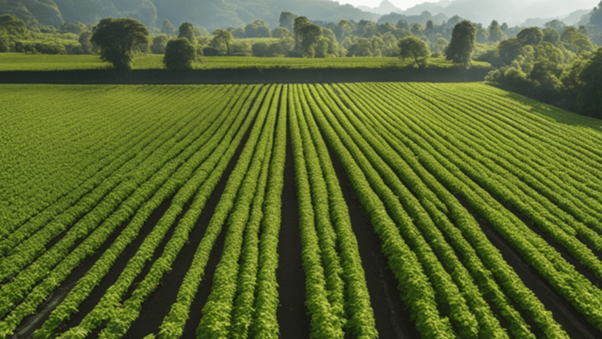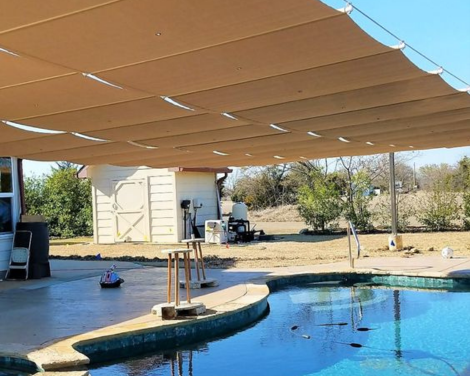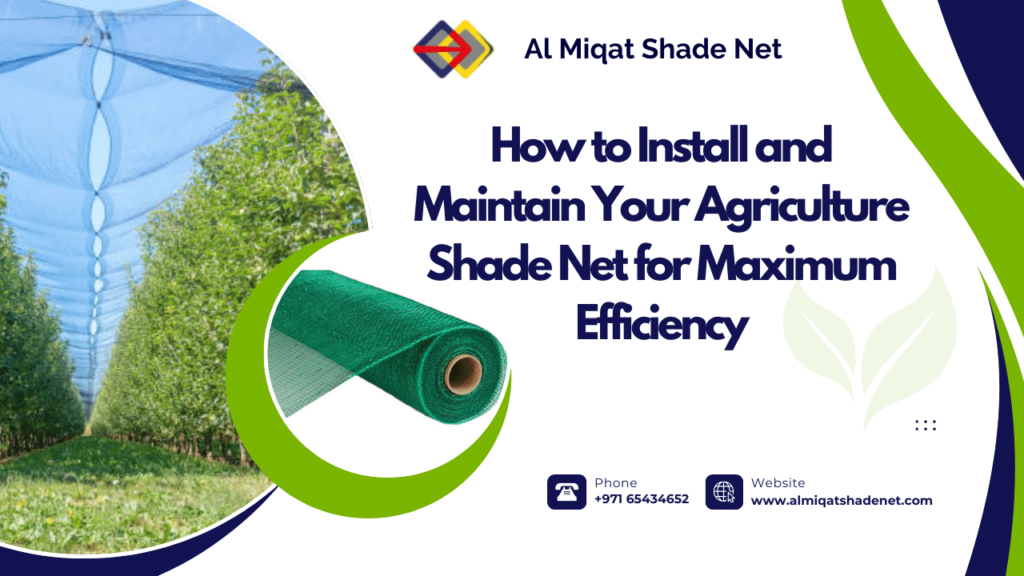Agriculture shade nets are a budget-friendly way to safeguard crops from too much sun and extreme weather. They’re a big help in the United Arab Emirates, boosting plant growth, yield, and saving water. By choosing high-grade, UV-resistant nets, such as those made of high-density polyethylene, we ensure top-notch crop protection, whether for livestock or fruit farms.
Choosing the right agriculture shade net is important. Look for features like how much sunlight it blocks, its lifespan, cost, and size. Good setup and care are crucial for getting the most out of your shade net. If you need a hand, reaching out to trusted suppliers like Al Miqat Shade Net can simplify things.

This guide will cover everything you need to know about setting up and looking after your shade net. Together, we’ll learn how this tech can help make farming better.
Understanding the Benefits of Agriculture Shade Nets
Agricultural shade nets provide many benefits in farming. They reduce the sunlight that reaches plants. This helps create a better growing environment by keeping the temperature steady and protecting against pests and birds.

Sunlight Reduction and Temperature Regulation
Shade nets help farmers control how much sunlight their crops get. These nets can adjust sunlight levels to meet each plant’s needs. This keeps temperatures just right, helping crops grow better and produce more.
Protection from Harmful UV Rays
It is crucial to protect crops from UV rays. Too much sun can harm plants and lower their yield. UV-stabilized nets block these rays, which keeps crops healthy and leads to better harvests.
Pest and Bird Control
Shade nets also keep pests and birds away from crops. This means farmers need to use fewer pesticides. It keeps plants healthy and supports farming that is good for the environment.
Agricultural shade nets help keep crops strong and productive. This benefits both farmers and those who enjoy fresh, high-quality produce.
Choosing the Right Shade Net for Your Needs
Choosing the right shade net is key for protecting crops and helping them grow. Think about the kinds of shade nets available, how much sunlight the crops need, and what colors are best.
Types of Shade Nets
Shade net types include knitted, woven, and aluminet. Knitted nets are flexible and durable, perfect for growing vegetables and flowers. Woven nets work best for protecting trees in orchards. Aluminet nets are great in hot places because they reflect heat, helping to cool things down.

Factors to Consider: Sunlight, Durability, and Cost
Choosing a shade net depends on your crop’s needs and your local climate. It’s important to reduce sunlight just the right amount. Durable agriculture shade nets last longer, saving you money in the end. And, considering the cost helps find a balance between quality and price.
Color Variations and Applications
Shade nets work better with the right color. A white agriculture shade net lowers heat and spreads light well, benefiting delicate crops. There are also green or black shade nets, picked to suit specific crops and the environment. The right color in a shade net type helps keep crops healthy and boosts yields.
Step-by-Step Guide to Installing Your Agriculture Shade Net
Before we get started, make sure the setup goes smoothly. Following an installation guide closely will save you time and make the net work better.
Preparing the Site and Materials
Start by preparing the area. Measure it to know how much netting you need. Al Miqat Shade Net is a great place to get high-quality materials. They can help your project be a success.
Installation Techniques for Maximum Coverage
How you install the net matters. Put it on evenly and pull it tight to stop it from sagging. This helps block too much sun and lets air move freely. Guides from Indonet Group are there to help you.

Securing and Stabilizing the Structure
Finally, make sure the net is firmly in place. Use strong supports to keep it from the wind. Tension tools will help you get it just right.
Maintenance Tips for Longevity and Efficiency
Keeping agriculture shade nets in good shape is vital for them to work well for a long time. It’s key to check them often, clean them right, and protect their UV blocking abilities. We’ll look into how to take care of these important farming tools.
Regular Inspections and Repairs
It’s essential to regularly check the nets. This helps spot and fix small issues before they get worse. Look out for any wear and tear, like torn sections or holes, and fix them right away.
Cleaning and Storage Best Practices
Good cleaning is a must for keeping your shade nets in top condition. It stops dirt and mold from breaking down the material. While not in use, keep them in a dry, cool spot out of the sun to prevent damage.
Ensuring UV Protection Over Time
Direct sunlight can make nets less effective over time. Choosing UV-protected nets and using sprays to add more protection can make them last longer. This not only keeps our crops healthy but also saves us money by avoiding frequent replacements. Al Miqat Shade Net points out that regular care enhances these nets’ efficiency and cuts down on costs, marking a smart choice for the future.
FAQ
Installing your shade net means getting everything ready and making sure it covers well. Keep it in good shape by checking for wear and tear, cleaning it properly, and making sure it stays good against the sun. Talk to companies like Al Miqat Shade Net for the best advice.
Shade cloth helps by lowering the amount of sun, keeping temperatures even, and stopping UV rays. It also protects against pests and birds. This way, plants can grow well without needing lots of chemicals.
These nets manage the sun’s brightness and make a steady temperature. This is great for helping plants grow, especially in hot places like the UAE.
Shade nets are specially made to block harmful rays and keep crops healthy. They prevent sun damage and keep crops productive for longer.
Yes, shade nets work by keeping pests and birds away from plants. This makes farming healthier and better for the environment, without using too many chemicals.
There are many types, like knitted, woven, and aluminet nets. Each is used for different types of farming, like growing vegetables, flowers, or protecting orchards. Trustworthy companies like Al Miqat Shade Net have a wide selection for your needs.
Think about how much sun you want blocked, how long it will last, and if it’s a good price. The area’s size and the weather are also important. Talking to experts in shade nets can help you choose the right one.
The color of your shade net affects how well it blocks the sun. For example, light or white nets are good at reducing sunlight. Pick the color that suits your crops and the weather.
Your net should be stretched tight to block the sun but still let air move. Make sure it’s anchored securely to stay strong against the weather.
Check your shade net often for damage and fix it when you need to. Clean it well and store it correctly. Using shade nets that protect against the sun helps them last longer, saving you money in the long run.


